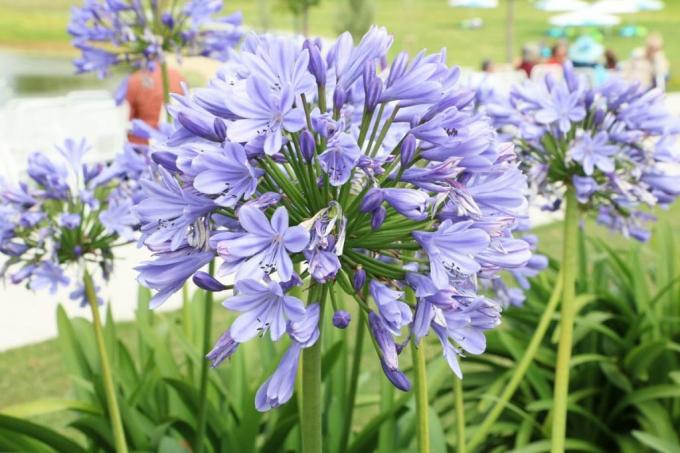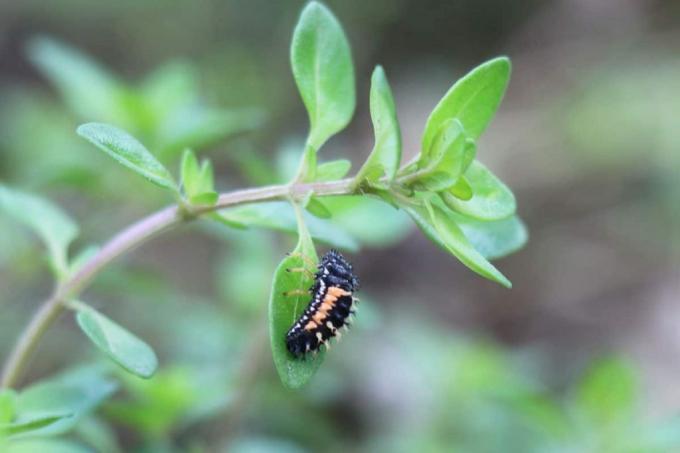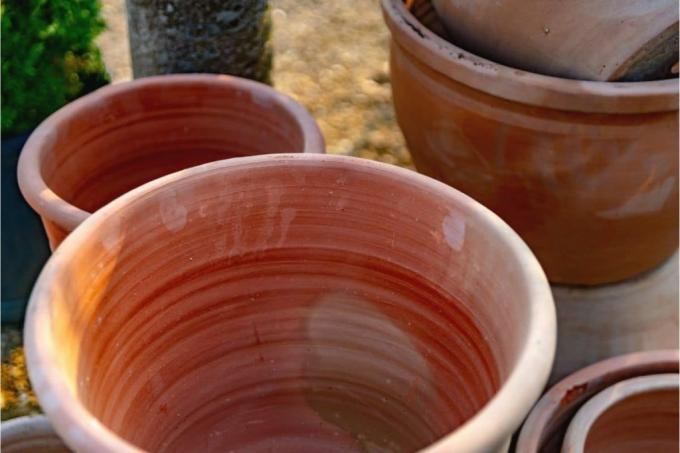
table of contents
- sowing
- Flowering and flowering period
- Soil condition and location
- Fertilizing and watering
- Diseases and pests
- plants
- Cut
- Overwinter
- Repot
- Increase by division
- frequently asked Questions
Profile and care information open +conclude -
- Flower color
- violet
- Location
- Sunny, full sun
- Heyday
- July August September
- Growth habit
- upright, clump-forming, perennial
- height
- up to 150 centimeters
- Soil type
- sandy, loamy
- Soil moisture
- moderately moist, fresh
- PH value
- neutral, weakly alkaline, weakly acidic
- Limescale tolerance
- Calcium tolerant
- humus
- rich in humus
- Poisonous
- Yes
- Plant families
- Amaryllis family, Amaryllidaceae
- Plant species
- Potted plants, Cut flowers, Perennials
- Garden style
- Pot garden, winter garden
Because of its origin, it is advisable to keep the African African Lily (Agapanthus africanus) in a bucket to cultivate, because it can be used in the front garden, garden or terrace with its decorative flowers decorate. Caring for the perennial is relatively easy.
sowing
Agapanthus africanus can be propagated by sowing. However, this is a method that is not so popular due to the long waiting years before the first flowering. The seeds can be purchased commercially or collected from an existing plant after flowering. In order to obtain seeds, the withered flowers must remain on the perennial until the seeds are ripe. This is not always recommended, both for optical reasons and for reasons of the then general weakening of the African Lily:
- Plants put a lot of energy into ripening seeds
- take these from the plant before wintering
- keep in a dry container
- Sow in February on a window sill
- Use the seed tray with potting soil
- spend in a bright location
- always keep sufficiently moist
- warm temperatures between 20 ° and 25 ° Celsius
- Germination after about four weeks
- plant in pots after three months
Note: You can tell when the seed capsules are brown when they are ripe. When the capsules open slightly, the seeds inside are ripe.
Flowering and flowering period
The African African Lily is a very floriferous perennial if it receives the right care. Then it develops many individual flower stalks from its center:
- single bell-shaped flowers
- sit together as a ball on a stem
- purple to lavender
- Flowering time from July to September
- form seeds
- Allow to mature for sowing
- otherwise remove dead stems
- Plant forms new flowers

Note: Despite its decorative bloom, households with young children and pets shouldn't ignore the fact that the perennial is poisonous.
Soil condition and location
The location is particularly important so that Agapanthus africanus can fully develop its decorative flowers. Because the darker it is, the fewer flower stalks are formed:
- location in full sun
- Due to its origin, the plant can also tolerate the midday sun
- sunny front yard
- South terrace or balcony
- Bucket in the middle of a sunny meadow in the garden
- normal, loose, slightly permeable pail soil is sufficient
Fertilizing and watering
Agapanthus africanus needs a lot of water during the growth and flowering period, but without causing waterlogging. Since the plant should be cultivated in a tub in the local latitudes, that of course is sufficient here falling rain does not prevent it, as it can hardly penetrate into the buckets, even if they are unprotected in the garden stand:

- water well from April
- at least once a week
- correspondingly more in hot summer months
- no watering necessary in winter
- fertilize regularly from April to August
- Stop fertilizing from autumn
- use special complete fertilizer
- Liquid fertilizer for potted plants
- Observe the manufacturer's instructions for use
Tip: Since the African African Lily has thick roots, it does not mind a short dry period, but this can be at the expense of the abundant flowering.
Diseases and pests
The African African Lily is a very robust perennial with hardly any Pests or diseases are known. However, a big mistake in care is to expose the plant to waterlogging for a long time. This can lead to root rot with subsequent death of the African Lily:
- yellow leaves show up
- Check substrate for moisture
- Remove the plant
- Free roots from entire soil
- Cut off any rotten roots
- Let the root ball dry well
- put in fresh substrate and water less
- occasionally aphids can also appear on the flowers
- only damage the optics
- Predators like Ladybug larvae put on plant

Tip: You can order predators against aphids on the Internet and get them from well-stocked specialist shops.
plants
When planting the African African Lily, the chosen pot must not be too big. The rhizome should have little clearance to the walls. Because the less space the roots have, the more luxuriant the perennial blooms. This is because the power does not have to be put into the growth of the roots. When planting in the tub, the following must also be observed:
- Place drainage on the drainage hole
- use pottery shards or balls for this
- Place plant fleece over it
- Fill in half of the substrate
- Insert Agapanthus africanus
- fill up the rest of the soil
- water well
- Drain the drainage plate after half an hour
- at the desired location
- start with the first fertilization after about three weeks
Note: The plant fleece over the drainage is supposed to prevent soil from getting between the shards or balls due to the irrigation water is washed up and this clogs over time, which in turn could lead to waterlogging, which is avoided target.
Cut
As a rule, Agapanthus africanus does not need a pruning. You should only remove yellow leaves when they show up. Even withered stems should be cut directly at the base if the seeds are not to ripen.

Overwinter
In the local latitudes, Agapanthus africanus must be overwintered. It is therefore not advisable to cultivate the plants in a garden bed, because overwintering will not succeed here:
- evergreen plant needs light winter quarters
- frost-free room
- Temperature between 0 ° and 7 ° Celsius
- dry climate
- for example isolated Glasshouse
- bright staircase
- unheated winter garden
- or a bright, dry basement room
- definitely not in the boiler room
- do not fertilize and water in winter
In April, the African African Lily can move outside again, but should be protected with a plant fleece over the entire bucket on frosty nights. The last of these nights can then be expected in mid to late May after the ice saints.
Note: The African African Lily does not need any care in winter if it is given the optimal location. Only in April is the tub with the plant put back outside and maintenance begins.
Repot
The African African Lily should be repotted every three to four years, because then the rhizome has spread so far that it hits the walls of the bucket. Repotting should be done before the plant is moved outside from its winter quarters in April. At the same time, the division of the rhizome can now also take place. Otherwise, choose a new, slightly larger pot and proceed as under “Plants”.

Increase by division
The division of the African African Lily should be done regularly so that it can continue to develop its full beauty. The advantage of the division is that the perennial can also be propagated at the same time. A division is recommended every three to four years, otherwise the rhizome will be too large:
- ideal time to move out of winter quarters
- early April
- Take the plant out of the bucket
- Remove the soil from the rhizome as much as possible
- Use a sharp and clean knife
- cut into three to four parts
- Put individual parts in new, own buckets
- proceed as under "Plants"
frequently asked Questions
The African African Lily also looks particularly decorative in a vase. In that case, you should cut the desired stems directly at the base. The right time for this is when the first flowers have just opened. So you can enjoy your cut flowers for a long time.
It is normal for the ornamental lilies to take one to two years to grow after dividing before they bloom again. If you have several plants of the variety, you can divide them up for propagation over the next year, so some of your ornamental lilies will always bloom.
The African African Lily is an evergreen specimen, it usually keeps its decorative leaves in winter. Therefore, it also makes a particularly good decorative eye-catcher in a bright stairwell. Only when individual leaves have turned yellow should you remove them. Otherwise, a cut for the care of the African Lily is not intended.



